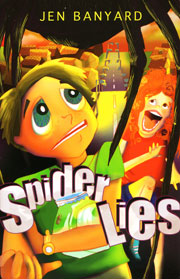Five Writing Tips
With a bit of luck these five writing tips will help you start AND FINISH your story 🙂
-
Put writing in your diary
Are you someone who writes? Or are you someone who thinks about being someone who writes? Getting down to the business of writing, and sticking at it long enough to finish a piece, is often all that separates two equally talented people, only one of whom can call themselves ‘a writer’. Make an appointment with your desk each day or week, even if it’s only for half an hour. Give your urge to write equal time to watching TV or checking Facebook, for instance. Aim to get just a few words or ideas down – nothing special. Over time they will add up.
Okay – so you’re at your desk. Now stay there for your allocated time! Writer Geraldine Brooks calls it ‘bum glue’ – the discipline to keep at your desk when a dozen distractions (often unhelpfully lumped into the term ‘writer’s block’) are trying to drag you away. Press on when you want to bail. No writer produces a story on 100% magical inspiration, the thoughts flowing as fast as she or he can type or scribble. It’s only by persevering through the tricky parts (in movies, it’s the scene where the characters drag themselves over desert dunes) that you’ll end up with a finished product. Write something, anything! You can change it later, but you’ll have something to work with.
-
Ideas box
Gather intriguing or appealing ideas for storylines, characters etc – notes jotted as ideas occur to you, newspaper clippings, photos of people and places – and keep them together in a box. Sift through them if you’re stuck. Maybe two or three will combine to create a strong storyline, or perhaps a single idea will add the extra dimension your story needs.
After you’ve been collecting ideas for a while, you’ll start to see possibilities in all sorts of things.
-
Read, read, read!
Reading is like fertiliser for your brain – especially the parts of it that create stories! Read quality writing and look at how the author handles story aspects such as the introduction of characters and background information, physical setting, the type and amount of detail given to make things believable and the setting up of questions for readers to wonder about. Aside from giving you a feel for the mechanics of story writing, it’s likely that some of this effective or elegant language will trickle into your own writing.
-
When the going gets rough …
Write what feels good and right and interesting to you, and be yourself. However, if your story starts to drag, or you feel that something is missing, consider whether you might change some aspect of these three key story elements:
- Characters: Are the main characters interesting and consistent in outlook? From which character’s point of view is the story (mostly) being told? Would another’s viewpoint make things more interesting?
- Setting: Is the physical setting (city vs bush, grim vs pretty, shack vs suburban house) adding all that it can to your story? Have you conveyed some sense of setting to your readers, or is it mostly locked away in your head?
- Structure: By structure, I mean the order in which information – be it background or newly arising – is given to the reader and to the characters. Does the reader need all that back-story right now? Should one character know something while another doesn’t? Does the reader need a certain piece of information in order to appreciate what is happening … or would the story work better if it were withheld for the time being? Basically, would a different order of information intensify interest?
-
Cake baking … or the Rule of Two Hats!
Write like a lunatic and don’t worry about who might read it and what they might think. This is the creating of the cake, the throwing in of ingredients. The editing (or polishing) phase comes later – just like the icing.
Nothing is more likely to derail your creativity than feeling the need to get everything perfect first off. In creating your basic cake, you’ll need to be strong. Turn off the spell checker. Turn off the computer for that matter and try writing longhand – making notes, crossing out and putting back in – and typing it up later. Above all, avoid fiddly, word-by-word edits until you’ve finished the whole manuscript. Things will change over successive drafts; paragraphs, possibly whole chapters, may be deleted. Close editing too early is not only inhibiting but time-wasting.
Slather on the icing (the editing) after your cake is created. Spend whatever time it takes making sure your story won’t be marred by fuzzy phrasing, confusing structure, wordiness, misspellings or clangers. Have someone look over it; read aloud parts you’re unsure of. If it’s short, read the whole thing aloud. You’ll be amazed (sometimes horrified) at what this coughs up.
If all this cake-baking talk doesn’t work for you, think of creating and editing as two different hats. How often do you wear two at once? However you look at it – editing always comes LAST!
When you’re ready, consult a resource like The Australian Writer’s Marketplace (Queensland Writers Centre) to find publishers that might be right for you. And don’t overlook competitions and magazines – they’re a great way to start getting your work out there!
Copyright Jen Banyard 2015





